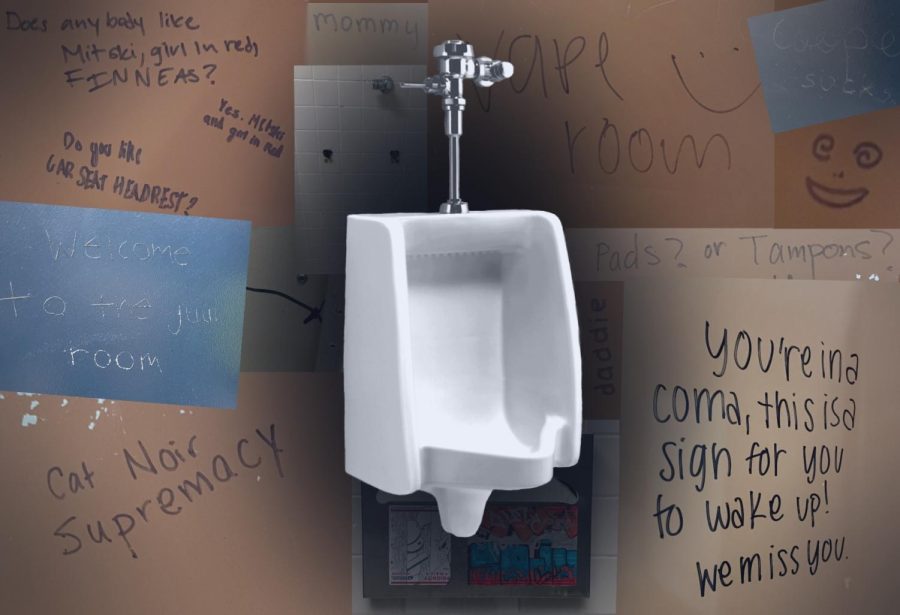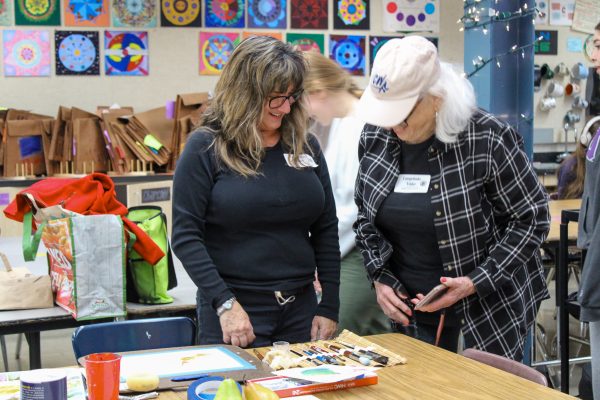‘Devious Lick’ Trend Inspires Campus Vandals
Vandalism covers the walls of the Campolindo restrooms.
As a result of the “devious lick” trend on social media platform TikTok, multiple accounts of vandalism and stolen goods have been reported around Campolindo.
With its phrase already banned on TikTok due to violation of community guidelines, the trend consisted of students recording themselves stealing multiple items from their schools. The most popular videos included larger and more difficult items to carry, including urinals, soap dispensers, and lockers.
Campolindo is no exception to this trend, with rumors of a urinal in the B hall being stolen. This rumor turned out to be false, confirmed by campus supervisor Max Luckhurst. The urinal had been missing for over 1 year prior to this trend.
According to facilities director and vice principal Stacy Southern, some vandalism that actually has occurred is that students have stolen soap dispensers from bathrooms and graffitied lockers.
Southern has also attributed this behavior to the “devious lick” trend. Despite this, Southern expressed confusion about the vandalism. “I just don’t get [the trend]…I just don’t understand.”
Senior Bojun Chen said, “I think that [the trend] inhibit[s] people from using the restroom on a daily basis, because with vandalism, then less people can use the restroom at the same time.”
In reference to the broken locks in stalls of the boy’s B hall bathroom, Chen said, “For example, if there are less stalls [available] or something like that, that means it’s really [preventing] people from using the restroom. And at the same time, teachers put restrictions on who can use the restroom at what time. So that’s really troublesome as well.”
In response to this, Southern explained that “[the school has] distributed sign-in [and] sign-out sheets to teachers, so that way when students sign-in and sign-out we can narrow down who’s been using [the bathroom] during this time and we can try and figure out if there’s a pattern.”
In general, teachers seemed unopposed to this new implementation.
History teacher Ray Meadows said, “I found that [with] the students, at least in my class[es], [using the restroom] is pretty quick and painless and they just sign-out and [we] keep tabs on where students [are].”
“Obviously we don’t want [vandalism] to occur, so if there’s something we can do to support [the school] then [we will],” Meadows added.
“Since we started [using the sheets],” Southern noted, “we have not had [anymore incidents]. So I think that in terms of a deterrent, I’ve seen that [they have] been effective.”
Southern said, “I don’t know what to originate [the vandalism] from, because I think that kids can direct their own behavior. So everybody has a choice on how they want to behave. In terms of social media, it has the power to do good and influence for good means. You decide how you want to use it.”
“I think sometimes [incidents will] happen and if students don’t feel comfortable coming forward or don’t let us know, then, we can’t help to solve it. So, we always encourage students to come forward and let us know what’s happening so that way we can help to put better systems into place to solve it, because we’re here to help,” Southern added.
Chen wishes to say to student vandals, “If you guys want to have fun, have it somewhere else. Not in the bathroom because that’s kind of weird.”
Your donation will support the student journalists of Campolindo High School's The Claw. Your contribution will allow us to produce more issues and cover our annual website hosting costs.

Senior Maggie Doolittle has been a Girl Scout since kindergarten, racking up a total of 11 years in her troop. "I have continued [Girl Scouts] because...

Senior Yasmine Chang spends her free time writing short stories and poetry, drawing on her love of reading and music.
Chang gains inspiration from these...

Senior Karina Aza has been drawing since before she can remember, honing her traditional art skills: “[art is] something I’ve been doing since I was...




